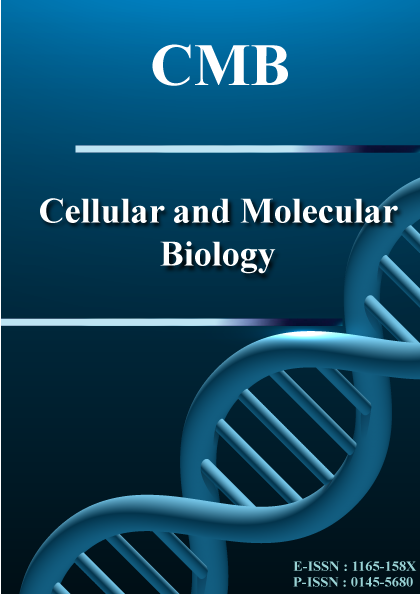Issue
Copyright (c) 2025 Desmond Mascarenhas, Bhaumik Patel, Puja Ravikumar, Edward Amento, Ajay Bhargava

This work is licensed under a Creative Commons Attribution-NonCommercial-NoDerivatives 4.0 International License.
The undersigned hereby assign all rights, included but not limited to copyright, for this manuscript to CMB Association upon its submission for consideration to publication on Cellular and Molecular Biology. The rights assigned include, but are not limited to, the sole and exclusive rights to license, sell, subsequently assign, derive, distribute, display and reproduce this manuscript, in whole or in part, in any format, electronic or otherwise, including those in existence at the time this agreement was signed. The authors hereby warrant that they have not granted or assigned, and shall not grant or assign, the aforementioned rights to any other person, firm, organization, or other entity. All rights are automatically restored to authors if this manuscript is not accepted for publication.Transcriptional modulation of skin cells using liganded immodulin peptides
Corresponding Author(s) : Desmond D. Mascarenhas
Cellular and Molecular Biology,
Vol. 71 No. 3: Issue 3
Abstract
Immodulins are synthetic peptides that efficiently utilize iron-mediated cellular uptake, importin-mediated nuclear translocation and binding to retinoid X receptor to mediate transcriptional effects. The possible use of side-chain derivatized immodulins (SCDI) as tunable therapeutic agents is explored in this work. Rat biodistribution studies show that, when applied transdermally to rats using a nanoemulsion, immodulin peptides rapidly partition to skin tissue resulting in a 9X enrichment in skin relative to plasma, even at skin locations distant from the site of application. We show that optimized side-chain derivatization of immodulins with selected ligands of RXR heterodimeric partners can stimulate by one to three orders of magnitude: [a] CD169+CCL22+ macrophage differentiation (RARα/β ligand); [b] IL-19, IL-22 and IL-24 production by HaCaT keratinocytes (RARγ agonist); and [c] FGF7/KGF-1, TGFβ and COL1A1 by dermal fibroblasts (partial PPARγ ligand); all p<0.01. Differentiated CD169+ macrophages, in turn, drive the conversion of FoxP3 CD4+Tcells into iTregs (>4-fold, p<0.01) while reducing IL-17 levels >4-fold (p<0.01). In addition, myoblast differentiation is stimulated >10X by a PPARα ligand (p<0.01). These processes resemble key features of paracrine circuitry in skin known to be involved in wound healing. Versatile SCDI scaffolds hold promise for the rapid and inexpensive development of safe, targeted, self-administered therapeutic agents for skin.
Keywords
Download Citation
Endnote/Zotero/Mendeley (RIS)BibTeX




